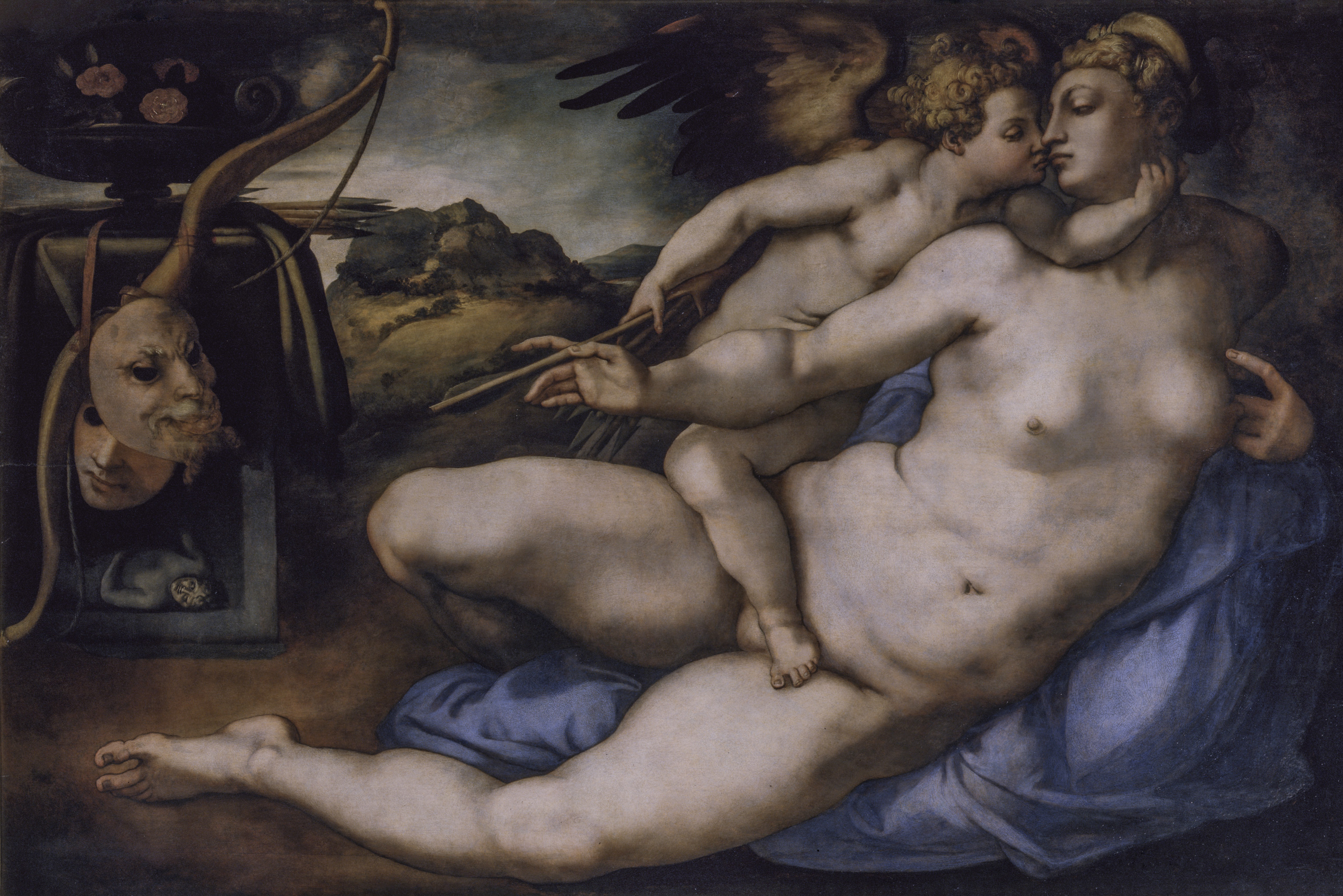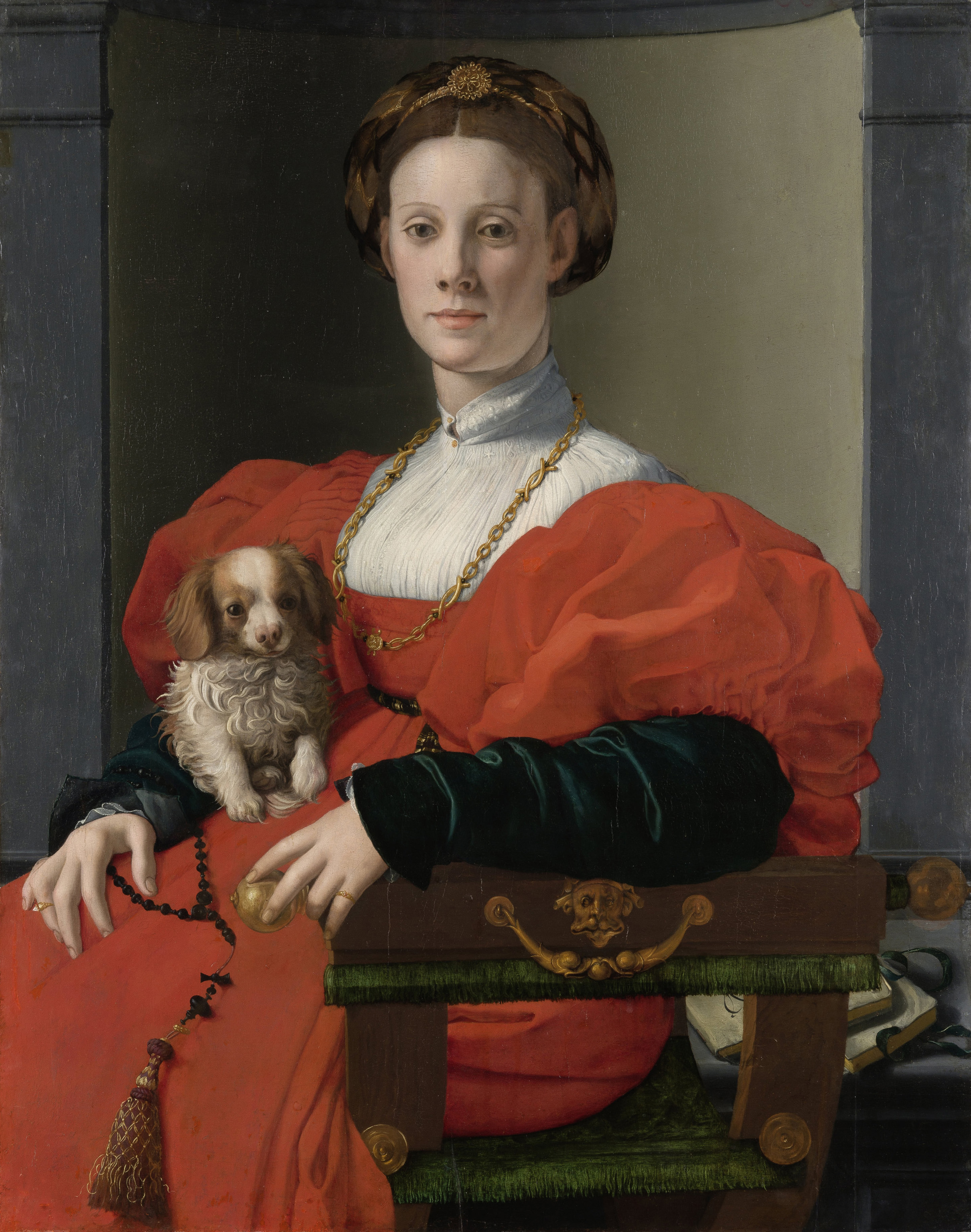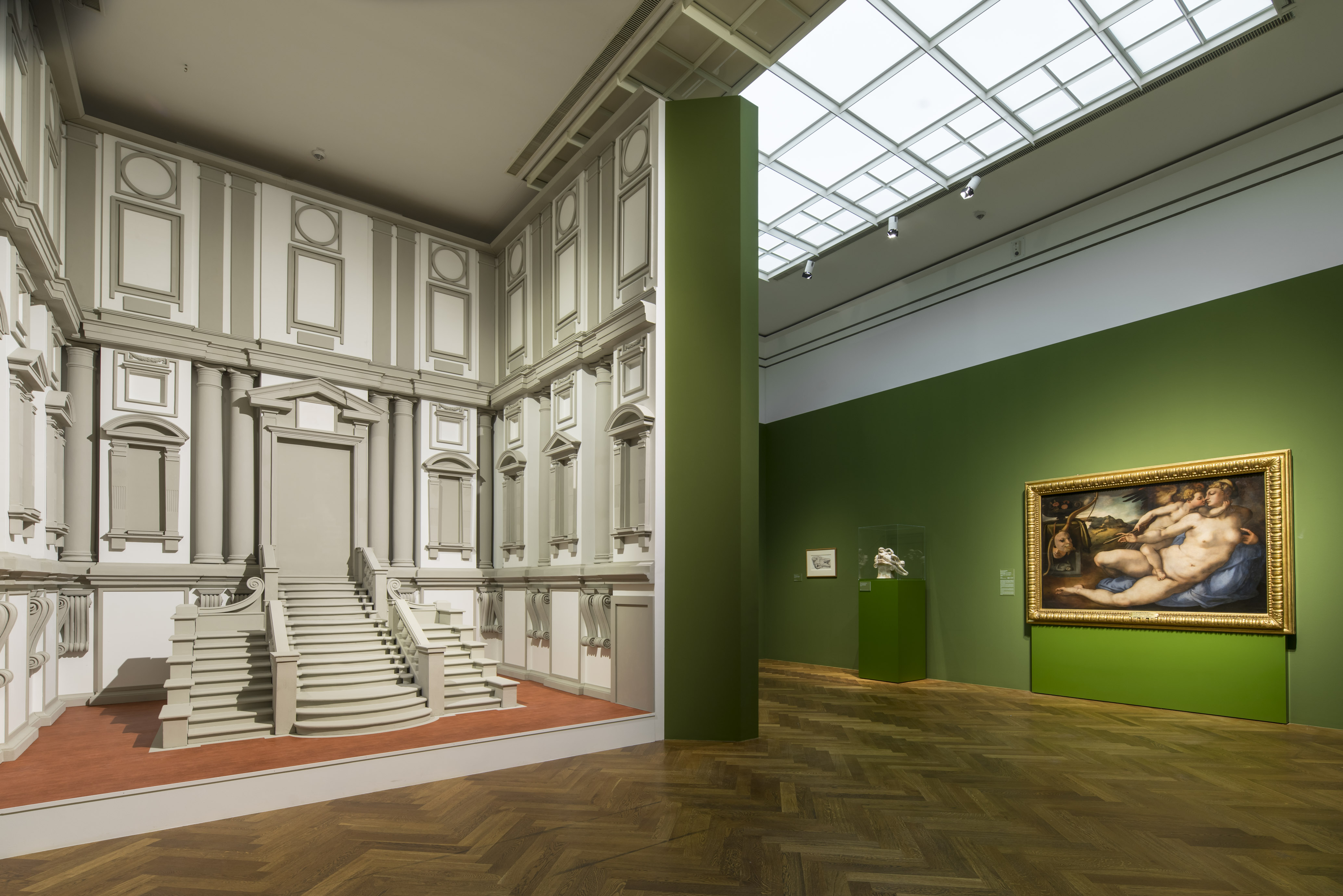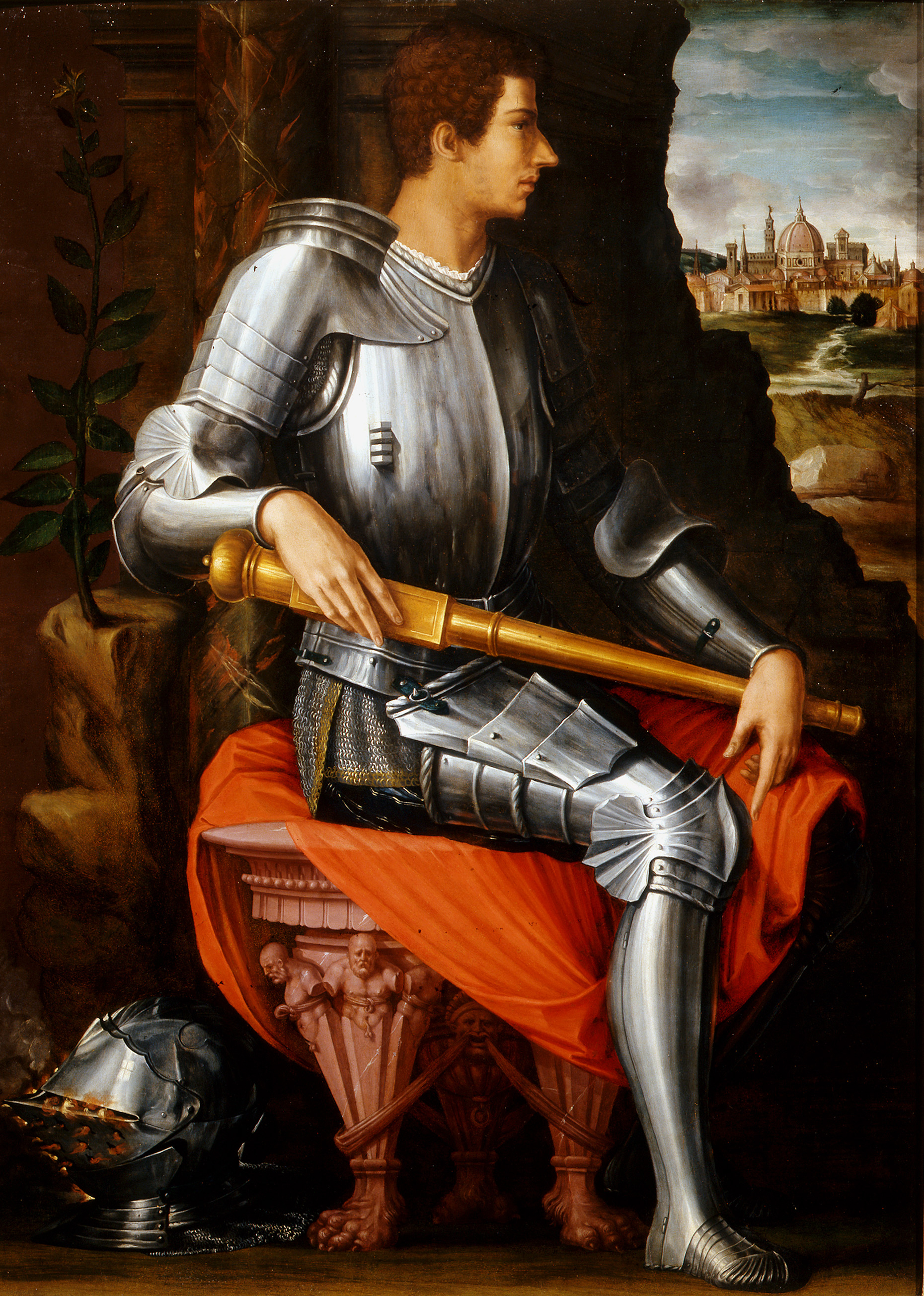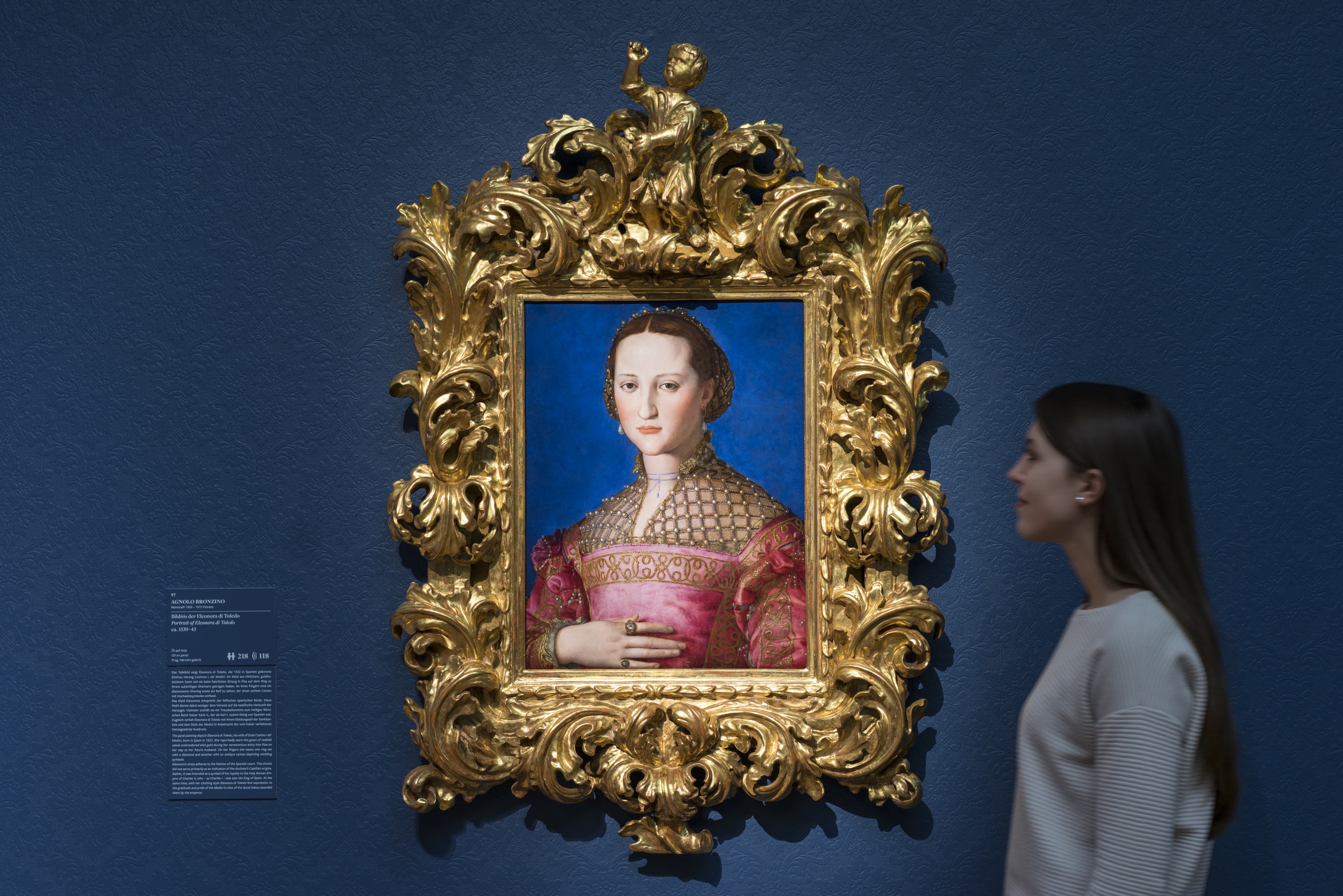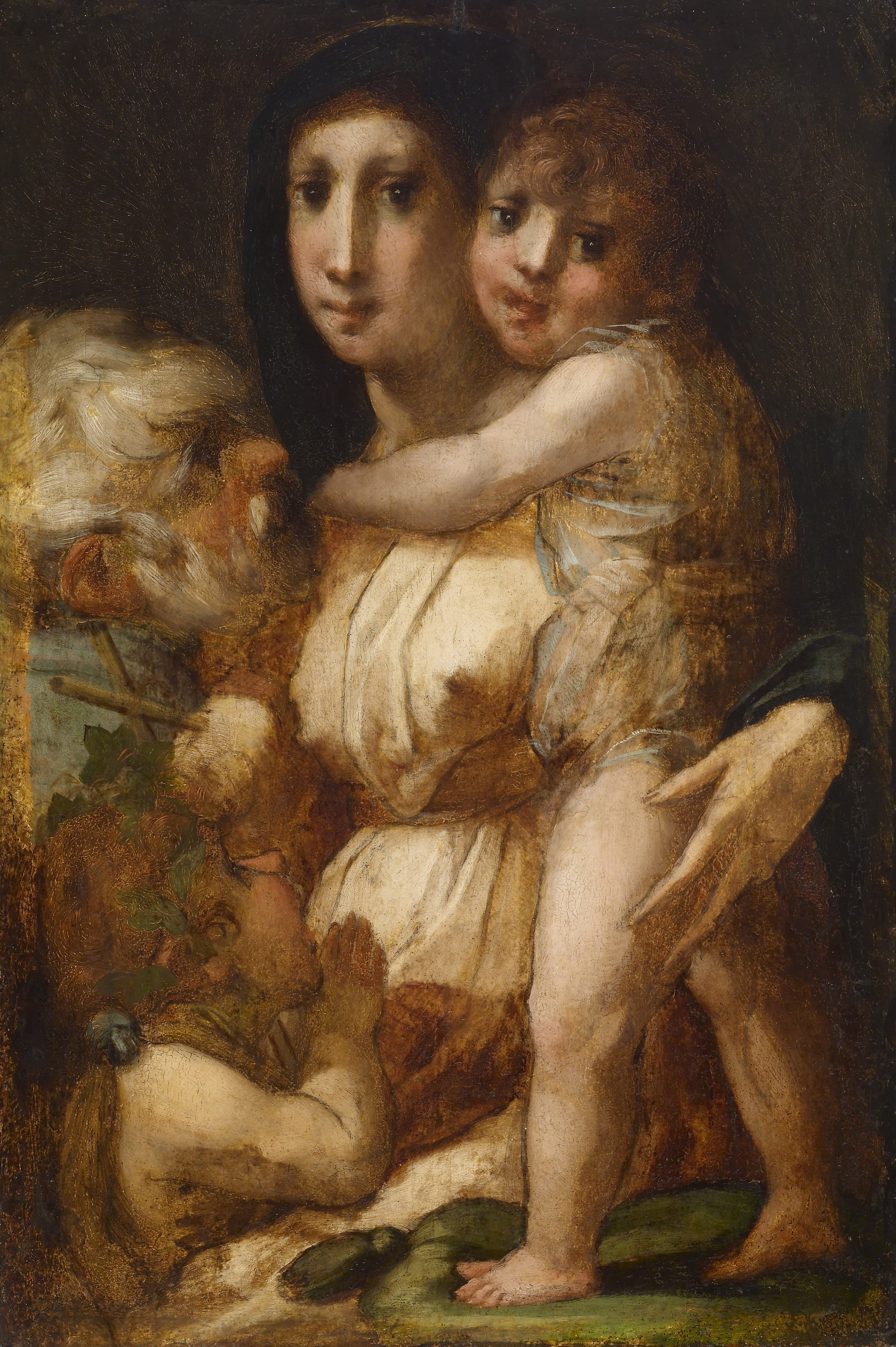Pontormo, Venus and Amor, 1533
By Andrea M. Gáldy –
Maniera. Pontormo, Bronzino and Medici Florence, 24 Feb to 5 June 2016 at the Städel Museum, Frankfurt/Main curated by Bastian Eclercy, the department of Italian, French and Spanish paintings before 1800.
Catalogue available in English and German: Bastian Eclercy, ed. Maniera. Pontormo, Bronzino and Medici Florence. Munich, London, New York: Prestel, 2016. ISBN 978-3-941399-58-7. Preparatory Digitorial available online at http://maniera.staedelmuseum.de/en.
These days, Mannerism – the artistic style sandwiched approximately between the Sack of Rome 1527 and the advent of Baroque in the early seventeenth century – is receiving some considerable curatorial attention. Exhibitions in Florence (for example at the Palazzo Strozzi on Bronzino in 2010/11 and on Pontormo and Rosso Fiorentino in 2014), in Edinburgh (at the National Galleries Scotland on Dutch Mannerism in 2008/9 ), or New York (the Morgan Library and Museum on Mannerism and Modernism in 2011) to name but a few have recently explored sixteenth-century are. If anything, the interest seems only to have accelerated since 2014 with shows focusing on El Greco, on Baccio Bandinelli, and on Pontormo’s drawings displayed at a range of venues. So, it seems no wonder that the Staedel, which after all is the home of Bronzino’s exquisite portrait of a lady in red (c.1533, Fig. 1, cat. 69/70, 168) has set up its own multi-media exhibition to explore the “stylish style” as it was labelled by John Shearman in 1967. Blessed with major loans from other leading museums, Bastian Eclercy’s Maniera explores many interesting connections between art, patrons, and the executing artists from Pontormo to Vasari.
Fig. 1 Bronzino, A Lady in Red, circa 1533, Staedel, Frankfurt
Mannerism, as it has been called in the Anglophone world since the 1960s, has not always been a favourite of art historians and curators. Vasari may have referred to it as the “buona maniera” in the Lives, but it looked rather too strange, neurotic and twisted next to the art of Fra Angelico and Botticelli to give it much scholarly or public acclaim before the 1955 “Triumph of Mannerism” show in Amsterdam. Odd colour juxtapositions as well as a cold artificiality typical for many of the paintings, in particular the portraits, contributed to the idea that it might have originated as the artistic reaction to the horrors of the Sack of Rome, to the growing spiritual uncertainty of diverse religious Reformations, and to the disturbing engagement with a first Global Age of Exploration that brought works of art, ideas and all sorts of commodities to Europe. Whether one still agrees with such theses or not, post-1512/post-1527 Medici Florence has long been considered as the hub of mannerist artistic production in painting, sculpture and architecture.
Fig. 2, Michelangelo, Vestibule of and Staircase to the Laurentian Library, c. 1524-1559, San Lorenzo, Florence.
Nonetheless, the style was heavily influenced – perhaps even kicked – by the works of Michelangelo. Florentine by training and patronage, the artist and architect continuously sought innovation by developing the art of his youth into something altogether more powerful and surprising. By the time he started to work in Rome, the borders between painting, sculpture and architecture were no longer as firm as they had been in his youth. The Medici may have been his longest-standing patrons but they were also frequently changing their aspirations, seats of power and modi of cultural sponsorship between the death of Lorenzo il Magnifico in 1492 and the election of Cosimo I de’ Medici in 1537. In particular, Michelangelo’s unfinished architectural and sculptural projects tied him to Medicean Florence. They also attest to changes in style under the influence of the rediscovery of the remains of imperial Rome (cats. 91/92, 210-1: reduced size bronze copies of the Belvedere Torso and of the Laocoon, Bargello) in combination with a desire to do away with old-fashioned ideas of decorum and beauty. Therefore, a large-scale model of the vestibule to San Lorenzo’s Library (Fig. 2, cat. 94-214-7) represents Michelangelo’s variation (1524-1559) on a Brunelleschian theme of grey and white with elongated proportions, a staircase that seems to move though it is missing its external bannisters and a decoration that has ceased to be structural.
Art and architecture playing similar “practical jokes” in its beholders was created elsewhere around this time, notably in the case of Giulio Romano’s Palazzo del Te in Mantua (1526-1534), but the Frankfurt exhibition concentrates, wisely, on Florence and Rome as the centres of maniera production. Such a decision had practical as well as conceptual reasons: the Medici are portrayed (in every sense) as one of the leading, soon to be princely families of Italy that promote this style. Newly ennobled when Alessandro received ducal rank as well as the hand of Emperor Charles V’s natural daughter Margaret after the siege and conquest of Florence by imperial troops in 1529/1530, the family needed to grow into its aristocratic role and establish a court able to compete with the rest of Europe and in particular with the Habsburg in-laws. Alessandro, shown in Vasari’s 1534 portrait in Maximilian armour (Fig. 3, cat. 114, 254-5), was murdered in 1537. Although young Cosimo’s suit for Margaret remained unsuccessful, his wedding to a well-connected Spanish bride acted as his entry card to the Holy Roman Empire and, at the same time, made Florence more international.
Fig. 3 Vasari, Duke Alessandro de’ Medici in Armour, 1534, Uffizi, Florence.
Meanwhile, the top-tier Florentine families did of course not go away. The city’s jeunesse dorée vied for attention at the new court, engaged with the latest philosophical and religious trends and became patrons of the foremost artists (cat. 100, 230: Francesco Salviati’s portrait of a young man, c.1546-1548, St. Louis Art Museum, St. Louis). These same painters and sculptors were also working for the Medici-Toledo court, which combined fashions from Florence and Rome with the Spanish and imperial cultural heritage of Cosimo’s dynastic bride. Leonor Alvarez de Toledo (Fig. 4, cats. 97/98, 224-6) was used to a different life-style. Her presence required a move to the Palazzo della Signoria (later Palazzo Vecchio) and the set-up of golden rooms for the new duchess. Her state apartments also included a private chapel, decorated by Bronzino with an altarpiece, two sets of wings and frescoes on the ceiling and the walls (cats. 103-5, 234-7) that attested to Eleonora’s taste and piety. Both had been shaped by her own upbringing in Spain and Spanish Naples and by the role, her mother Maria Osorio Pimentel, had played as ward of court of Queen Isabel the Catholic before succeeding to the Marquisate of Villafranca and marrying Don Pedro Alvarez de Toledo.
Fig. 4 Bronzino, Portrait of Eleonora of Toledo, c.1539-1543, Narodni Gallery, Prague.
Apart from political necessity, within the expanding networks of power, it was most likely the duchess’s requirement for the splendid and cosmopolitan life-style due to her rank, that led to the arrival of artists and artisans from the North of Europe. Tuscany was soon to harbour substantial groups of foreign students and tapestry weavers, among others, who left their marks on the cultural, educational, spiritual and economical settings of the Duchy. Vasari, who is included in the Frankfurt Maniera show as an artist as well as an art historian, often criticised his colleagues for working too much in a northern style. Recent research has indeed shown that not only had Duke Cosimo every interest and intention to imitate imperial court culture, really a mixture of Burgundian, Flemish and Spanish styles, but that his court artists either were foreign imports or produced works of art that showed foreign influences, for example in the case of Pontormo or Bachiacca. In particular, for the nascent tapestry manufacture in Tuscany (cats. 107-9, 240-243 discuss Florentine tapestries executed by Jan Rost and Nicholas Karcher after designs by Bronzino), it can be observed how Burgundian types of luxury goods fashionable in Spain and promoted by the emperor himself led to an exchange of techniques and personnel between the diverse parts of the empire and thus to the dissemination of ideas and models both as regarded the arts and religious confessions. Cosimo’s Arazzeria Medicea (1546) was therefore at least one of the threads that conducted information between trends from north of the Alps, the decoration of Eleonora’s terrazzo and Pontormo’s frescoes for the choir of San Lorenzo.
Fig. 5 Rosso Fiorentino, The Holy Family with the Infant St. John the Baptist, c.1521, The Walters Art Gallery, Baltimore
Pontormo, Bronzino and the other artists active at the Florentine court worked in a wide array of media. They treated diverse topics and were able to capture many influences antiquity, the Florentine Republic as well as from the lands of the Holy Roman Empire. Although the subject matters adopted for display at the international Medicean court were wide-ranging as well, religious art continued to play a major role in the artistic production of the times. The Madonna and Child or Holy Family remained a set piece attempted by most if not all artists in Florence during the sixteenth century. As the versions by Rosso Fiorentino (Fig. 5, cat 22, 86-7: Rosso Fiorentino’s Holy Family, c.1521, The Walters Art Gallery, Baltimore) or an early, unfinished painting by Pontormo (c.1516/17, cat. 4, 48-9) in a private collection demonstrate, such renditions of popular and sacred themes had already been infused with renewed energy and with the artists personal style by then. Whether Rosso and Pontormo were the wild young men of the late Florentine Republic or whether they followed another wild young man soon to abscond to Rome and never to return, i.e. Michelangelo, is perhaps a moot point. What may be more engaging, and what the exhibition does rather well, is to watch the debates among and rivalries between the different artists working at some point for the Medici in a new style developing out of the High Renaissance. Bickering and bitching by dint of their works of art and writings, Pontormo, Bronzino and their contemporaries are never anything but human. And, lest anyone should forget, excerpts from Pontormo’s Diary at the end of the display serve as a not entirely wholesome reminder of what a world without fridges and gastroenterologists may do to you when you are no longer young.
